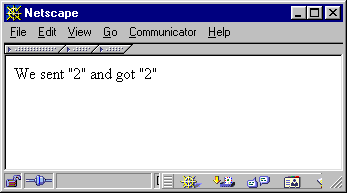PHP. Руководство по PHP. 2005
Using Extensions Пред.
Глава 49. Using Extensions
Depending on the build process you selected, you should either end up
with a new PHP binary to be linked into your Web server (or run as CGI), or with an.so (shared object) file. If you compiled the
example file first_module.c as a shared object, your result file
should be first_module.so. To use it, you first have to copy
it to a place from which it's accessible to PHP. For a simple test procedure,
you can copy it to your htdocs directory and try it with
the source in Прим. 49-1.
If you compiled it into the PHP binary,
omit the call to dl(), as the module's
functionality is instantly available to your scripts.
| Внимание |
|
For security reasons, you should not put your dynamic modules into publicly accessible directories. Even though it can be done and it simplifies testing, you should put them into a separate directory in production environments. |

